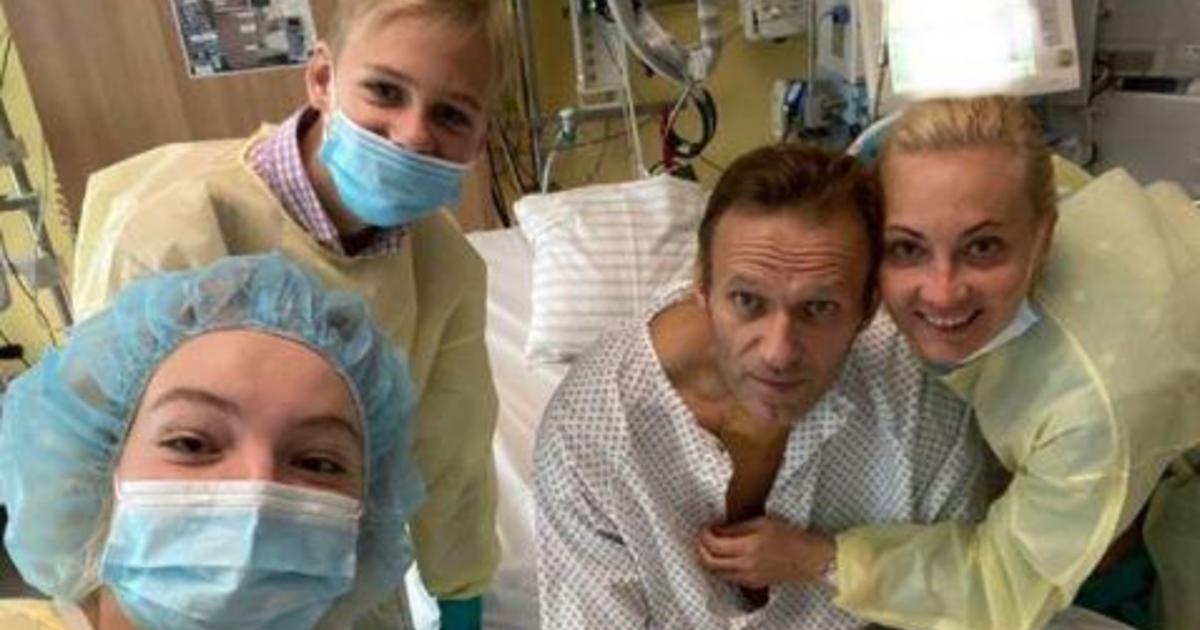New details emerged Thursday about the poisoning of Russian opposition leader Alexei Navalny, including video from inside his hotel room purportedly taken just after the attack. Colleagues of the vocal critic of Russian President Vladimir Putin said tests had revealed traces of a nerve agent on a water bottle from the hotel room.
The video posted to Navalny’s Instagram account purportedly shows members of his team combing through his hotel room just one hour after learning that he’d fallen gravely ill on a domestic flight in Russia.
His associates can be seen carefully collecting anything that might provide clues. As CBS News correspondent Charlie D’Agata reports, Navalny’s team claim a German lab has confirmed that traces of a highly toxic Novichok nerve agent were detected on the water bottle found in the room.
Navalny speaks for first time since poisoning…
00:39
The Russian dissident’s representatives originally said they believed he was likely poisoned with a cup of tea at an airport in the country’s northern Siberia region, before boarding the flight to Moscow.
During that flight, Navalny fell violently ill and the plane made an emergency landing in Siberia, where he was hospitalized for several days before being airlifted to Berlin for treatment.
But chemical weapons expert Hamish DeBretton Gordon, who recently published a book on his work in the field entitled “Chemical Warrior: Saving Lives on the Front Line of Modern Warfare,” told CBS News that the tea-at-the-airport theory always seemed unlikely.
“Putting it on a water bottle would ensure that Navalny would poison himself,” said de Bretton-Gordon, explaining that Novichok is so deadly, just coming into contact with “a single molecule” can prove fatal.
Contaminating a water bottle that an intended target is expected to pick up, “makes a lot more sense” than trying to slip it into a cup of tea quickly in a busy airport, he told CBS News. It also appears similar to the tactics used in an attack on a former Russian double agent the U.K.
Sergei Skripal and his daughter were both poisoned with Novichok in the English city of Salisbury in 2018. The U.K. has charged two alleged Russian agents in the attack, which left one woman dead after she sprayed the nerve agent onto her arm, thinking it was perfume.
U.S. imposing new sanctions on Russia
03:28
“It’s very similar to the delivery from the Salisbury attack, where the Novichok was put on a [door] handle,” said de Bretton-Gordon. He said that, just as was the case in England, there would likely be a rush in Siberia to see “who else has been contaminated and poisoned, remembering that Salisbury took 18 months to decontaminate from probably a similar amount.”
The Kremlin has denied any involvement in the poisoning of Putin’s fiercest opponent, accusing Germany of refusing to hand over data or lab samples that prove the accusation of Novichok poisoning.
Labs in Sweden and France have now backed the German findings, however, and on Thursday, the global chemical weapons watchdog agency, the OPCW, confirmed that representatives had visited the Berlin hospital to collect samples from Navalny, and that its findings would be forthcoming.
The first photo showing Navalny since the poisoning was posted to his Instagram account earlier this week. He was pictured sitting up in his hospital bed, looking alert and surrounded by his wife and children, just a couple days after he was brought out of a medically-induced coma and taken off a ventilator.
Visiting the U.K., Secretary of State Mike Pompeo told the British Foreign Secretary that the U.S. stands together with its European partners in the face of the latest alleged poisoning attack, calling any use of chemical weapons “unacceptable under any circumstances.”
Navalny’s team says he has every intention of returning to Russia.
